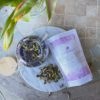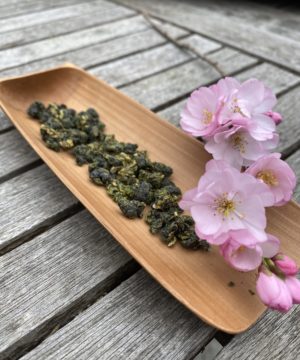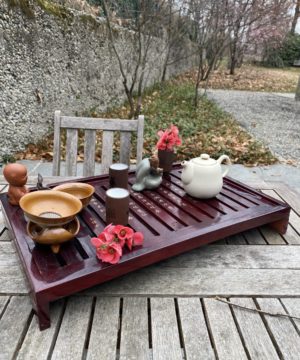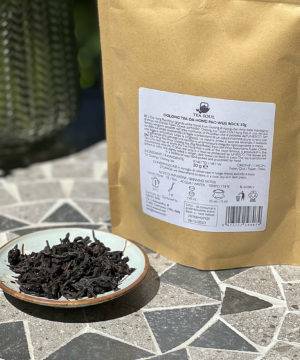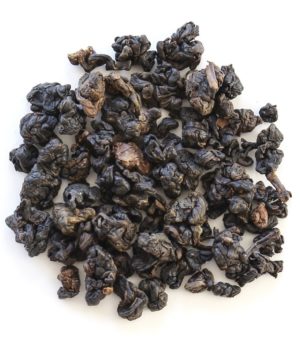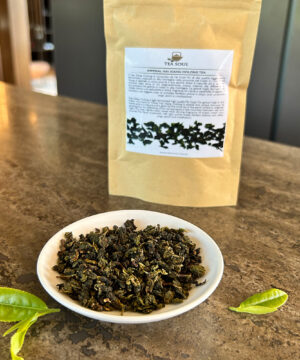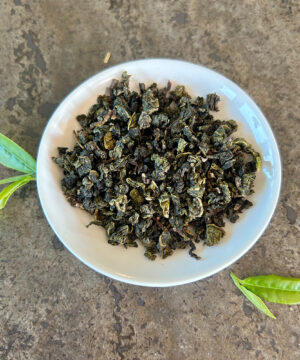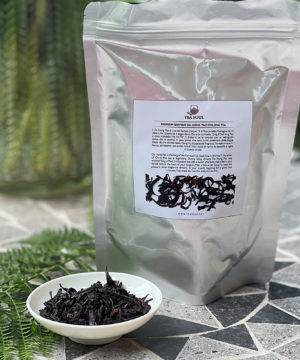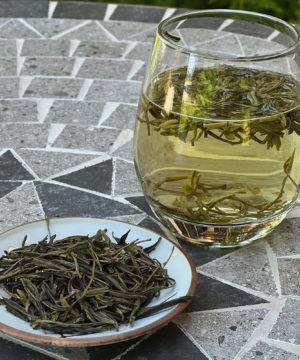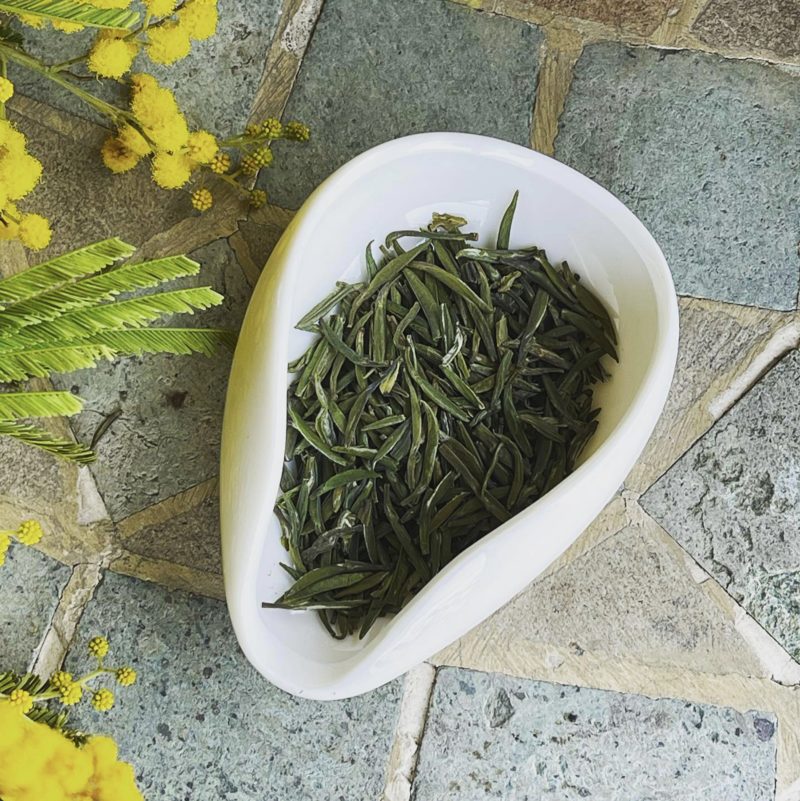
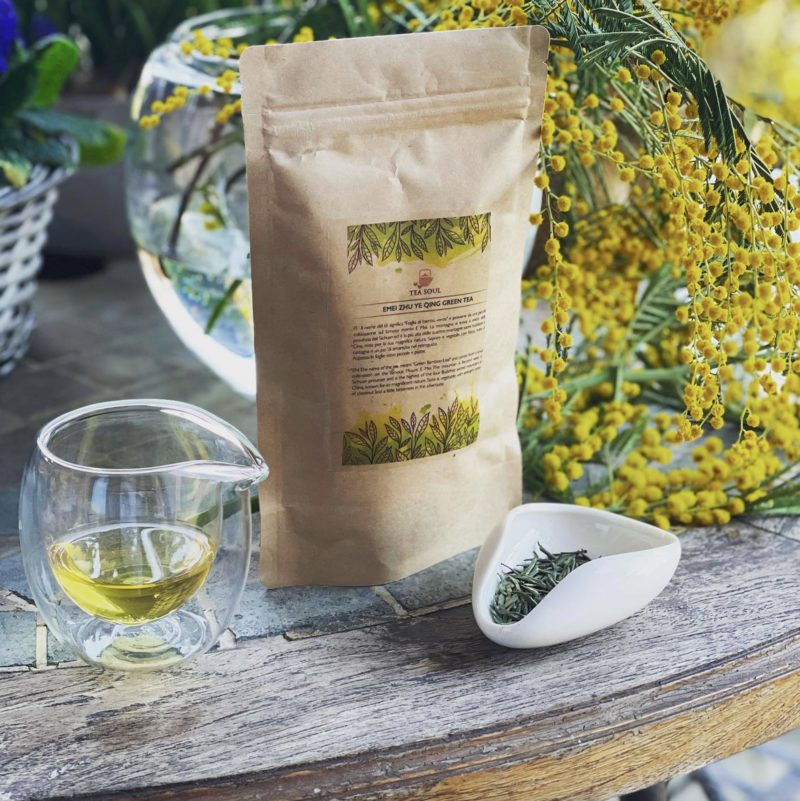
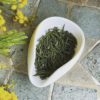
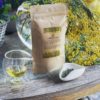
Emei Zhu Ye Qing Green Tea
26.70€ Taxes included
Emei Zhu Ye Qing Green Tea is obtained by selecting from high-altitude gardens on Mount Emei only the bud and apical leaf during the early spring season. The slightly curved and pointed shape of its leaves, much like that of young bamboo leaves, gave rise to its name: Zhu Ye Qing, in fact, translates from Chinese as “green bamboo leaf.” It is a sweet and savory tea at once, with soft herbal notes and an enveloping body.
SKU: te-verde-emei-zhu-ye-qing
Categories: Tea, Green tea, TrovaPrezzi
DON'T MISS DISCOUNTS AND NEWS!
Subscribe to our WhatsApp channel and receive all updates quickly and conveniently!
Subscribe to our WhatsApp channel and receive all updates quickly and conveniently!
Emei Zhu Ye Qing Green Tea is obtained by selecting only the bud and first leaf during the early spring season. This fairly earlier-than-average harvest, coupled with its sourcing from high-altitude gardens on Mount Emei, gives the product a slightly curved, pointed shape very similar to that of young bamboo leaves. The Chinese name Zhu Ye Qing, in fact, can be translated as “green bamboo leaf” and was given to the tea precisely because of the similarity between the two natural elements. In appearance this product is also very close to Yunnan Que She green tea but, although both come from the Sichuan region, they have quite different characteristics especially in taste. Emei Zhu Ye Qing turns out to be a tea with a distinct vegetal sweetness and a definite savoriness, combined with a fresh mouthfeel.
Tasting – Sight and smell
Emei Zhu Ye Qing green tea has small, very glossy, asparagus-green leaves and buds with a curved shape that are reminiscent, as the name of the tea suggests, precisely of bamboo leaves. Once infused, they release fresh, sweet vegetable aromas, such as peas, broccoli and baby carrots, as well as slightly roasted notes. In the cup, the liquor is soft yellow, smooth on the palate with just a slight astringency.
Tasting Notes
GONG FU CHA
The first infusion of Emei Zhu Ye Qing green tea surprises with a particularly intense umami taste: it is reminiscent of steamed zucchini and boiled carrots, yet with a fresh note of fava beans. With the second infusion, a vaguely floral sweetness emerges combined with notes of baked pumpkin and finally chestnut. It is very pleasant the savoriness that is now more distinctly perceived and perfectly balances the sweetness of the vegetal notes. With the third infusion, it is the hint of chestnut that prevails, becoming more intense, as well as the sweet roasted notes. The finish is strongly umami, very enveloping on the palate with a silky body.
WESTERN
The first notes of Emei Zhu Ye Qing green tea are a perfect mix of sweetness and savory: the umami brings to mind zucchini broth, while the sweetness comes from notes of boiled carrots and peas. A fresher note of bamboo shoots is also faintly present. Medium notes of pumpkin, baked potato and boiled chestnut can then also be perceived on the palate. Roasted peanut notes are briefly evident on the finish, while the persistence is long, sweet and vegetal.
Place of origin
Emei Mount – Sichuan, China
Production
Emei Zhu Ye Qing green tea has a very classic processing process that involves, after an initial withering in the open, cooking the leaves in large woks heated to temperatures around 180°C to block enzymatic activity and prevent oxidation of the leaves. After these stages, the leaves receive their final shape and are left to rest so that they lose some of the residual moisture inside.
How to prepare
We strongly recommend infusing Emei Zhu Ye Qing tea in the traditional Chinese method (Gong Fu Cha) with a gaiwan with a capacity of about 150 ml. By following this preparation, multiple infusions can be made with 5 grams of leaves that are useful to best capture all the flavor nuances of the tea.
Heat the water to a temperature of 80°C (176°F) and proceed with an initial 20-second infusion. Keeping the water at the same temperature, you can then continue to exploit the same leaves by adding more water and increasing the infusion time by 5 seconds each time (20 – 25 – 30…).
This tea has a longevity of 5-6 infusions.
For a more classic preparation in the Western style, we recommend 3 grams of leaves (about 2 teaspoons) in a 200-mL cup with water at 80°C for an infusion time of 2-3 minutes.
For a better tasting experience, we suggest that you strain the infusion as soon as the brewing time is over. The brewing time recommendations, however, can also be slightly adjust by your personal taste in order to obtain a strong or more delicate cup of tea.
It is recommended that Emei Zhu Ye Qing tea be stored in a cool, dry place away from direct sunlight.
| Weight | 0.000000 g |
|---|---|
| Dimensions | 0.000000 × 0.000000 × 0.000000 cm |
| Detail - Temperature | 80°C |
| PACKAGE | 250 g, 50 g |
| Detail - Brewing | Refreshing |
| Feature - Caffeine | High Caffeine |
| Feature - Oxidation | No oxidation |
| Other - Origin | China |
| Other - Taste | Vegetal |
| Other - Instants | Drink |
| Preparation - GAIWAN | 5gr x 150ml / 20 – 25 – 30… sec / 5-6 brewings |
| Preparation - CUP | 3gr x 200ml / 2-3 minutes / 2 brewings |
| Season |
Still no Reviews for this Product
Related products
10.40€ Taxes included
Earn up to 208 points.
This product has multiple variants. The options may be chosen on the product page
Sale!
Tea puer sheng
12.80€ Taxes included
Earn up to 110 points.
This product has multiple variants. The options may be chosen on the product page
10.40€ Taxes included
Earn up to 121 points.
This product has multiple variants. The options may be chosen on the product page
8.00€ Taxes included
Earn up to 30 points.
This product has multiple variants. The options may be chosen on the product page
9.20€ Taxes included
Earn up to 63 points.
This product has multiple variants. The options may be chosen on the product page
15.00€ Taxes included
Earn up to 55 points.
This product has multiple variants. The options may be chosen on the product page
10.40€ Taxes included
Earn up to 69 points.
This product has multiple variants. The options may be chosen on the product page


 Italiano
Italiano Français
Français Deutsch
Deutsch

